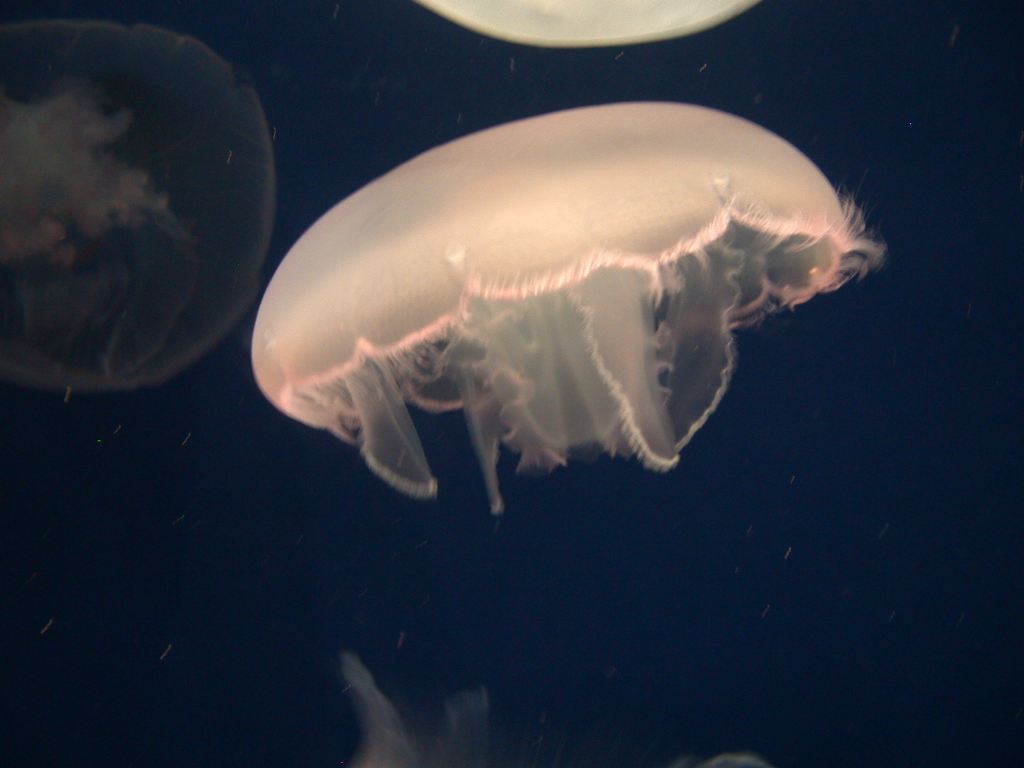Classification
|
Domain - Eukarya Picture by Tom Volk |
The classification of Aureilia aurita can be understood when a basic characteristics of each level of classification is known. Domain Eukarya is simply represented by organisms who have similar characteristics such as a cell nucleus, a cytoskeleton, mitosis, and multiple, linear DNA. All animals are included in this domain. Kingdom Animalia consists of multicellular, non-photosynthetic organisms with no cell walls. Jellyfish and sea anemones are both part of the phylum Cnidaria. They are multicellular, diploblastic, radial symmetric organisms with nematocysts. Class Scyphozoa consists of cup animals and jellyfish. They are characterized by having a polyp stage called scyphistoma and contracting/relaxing muscles along base of their bell-shaped body. Order Semaestomeae, to which Aurelia aurita grouped, is characterized by four oral arms and a gastrovascular system of unbranched pouches and no ring canal. Family Ulmaridae is simply a family of jellyfish. Genus Aurelia basically consists of a variety of moon jellyfish, most well-known, of course, is the species Aurelia aurita. The reasons for the classification of Aurelia aurita is very understandable when the characteristics of each group, stated above, are taken into consideration. The figure above shows where Aurelia aurita are placed in the metazoan phylogenic tree. Metazoans are simply multicellular organisms with differentiable tissues and organs usually including a nervous system and digestive cavity. Recall from above that Aurelia aurita is a scyphozoan belonging to the phylum Cnidaria. The phylum Cnidaria is very closely related to the phylum Ctenophora which consists of comb jellies. Both of these organisms are placed seperately from the phylum Porifera (sponges) becasue the are eumetazoans. This means they have a digestive tract while sponges do not. Moon Jellies do not have bilateral symmetry and are thus not grouped with protostomes or deuterostomes. Ultimately, sponges, comb jellies, moon jellies, and protostomes and deuterostomes all relate back to a common protist ancestor. |











